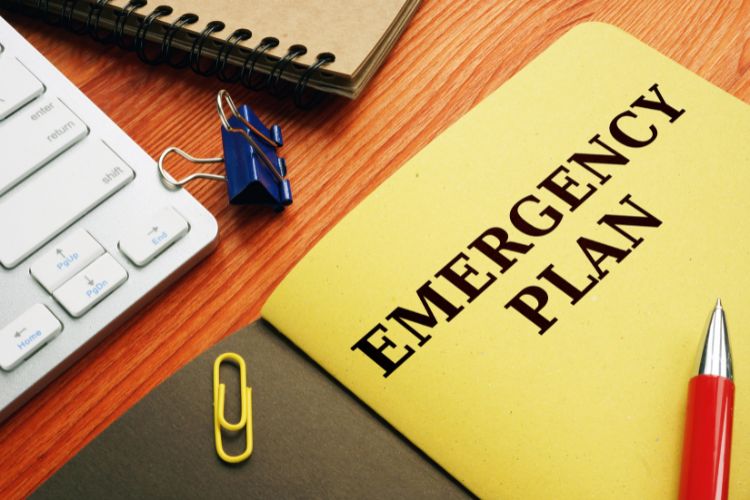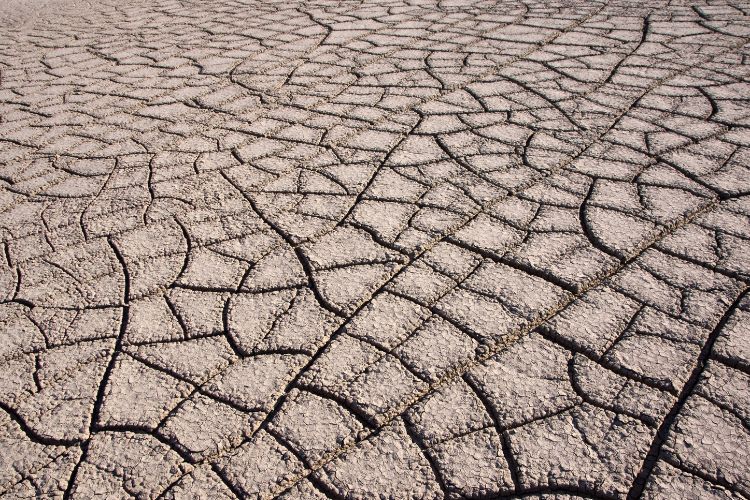In the U.S., drought conditions are a common natural occurrence affecting millions of people across the country. The importance of drought preparedness cannot be overstated. Droughts can have profound and lasting effects on communities, impacting their local economies, livelihoods, and overall quality of life.
Drought preparedness refers to the series of actions and strategies designed to minimize the impact of drought by ensuring individuals, communities, and systems are well-equipped to withstand its effects. It includes understanding the potential risks and challenges of a drought, and planning measures to mitigate these effects.
The U.S., due to its vast geographic expanse, experiences a wide range of climatic conditions. Certain regions, such as the Southwest and the Great Plains, are particularly prone to droughts, but no area is truly exempt from potential drought conditions. The frequency and severity of droughts in many parts of the U.S. have been increasing due to changing climate patterns, which makes drought preparedness even more crucial.
Dangers of Drought
Drought conditions pose numerous challenges and risks, which can broadly be categorized into environmental, economic, and social impacts.
- Environmental Impacts: Drought conditions can lead to reduced water levels in reservoirs, rivers, and wells, which in turn affects local ecosystems. Reduced rainfall can lead to soil erosion and degradation, loss of wildlife habitats, and increased risk of wildfires.
- Economic Impacts: Droughts significantly affect sectors such as agriculture, livestock farming, and energy production, which rely heavily on water. This can lead to increased food prices, job losses, and overall economic instability. Infrastructure such as water treatment plants and power stations may also be strained due to low water availability.
- Social Impacts: On a human level, drought conditions can affect the availability and quality of drinking water and can lead to public health issues. Prolonged droughts can exacerbate socioeconomic disparities as communities struggle to access and afford water. There may also be heightened competition and conflict over scarce water resources.

How to Prepare for a Drought
Drought preparation involves a multifaceted approach, considering various aspects such as water needs assessment, water conservation, use of efficient technologies, exploration of alternative water sources, and development of contingency plans. Here’s how you can prepare:
- Assessing Water Needs and Creating a Water Management Plan for Your Region: Understanding your water needs is the first step in creating an effective water management plan. Identify key areas of water use in your household or community, and evaluate how much water each activity requires. A comprehensive water management plan should include strategies for reducing usage in these areas, particularly non-essential uses.
- Conserving Water Indoors and Outdoors Through Efficient Practices: Water conservation is critical during periods of drought. Here are some strategies for conserving water:
- Indoor: Fix leaks promptly, limit the duration of showers, only run dishwashers and washing machines with full loads, and avoid leaving the tap running unnecessarily.
- Outdoor: Water plants early in the morning or late in the evening to reduce evaporation. Choose drought-resistant plants for your garden, and use mulch to help the soil retain moisture.
- Implementing Water-Saving Technologies and Fixtures: Consider investing in water-saving technologies and fixtures. These can include low-flow faucets and showerheads, dual flush toilets, and energy-efficient dishwashers and washing machines. Such devices can significantly reduce your water usage without compromising your lifestyle.
- Exploring Alternative Water Sources and Considering Rainwater Harvesting: Alternative water sources such as rainwater or graywater (lightly used water from baths, sinks, washing machines, and other kitchen appliances) can be valuable resources during a drought. Rainwater harvesting involves collecting and storing rainwater for use in the garden, washing cars, or flushing toilets. Graywater systems require careful management to ensure health and safety but can provide a valuable secondary source of water for non-potable uses.
- Developing a Contingency Plan for Water Shortages Based on Local Conditions: Regardless of the measures taken, droughts can still lead to water shortages. Developing a contingency plan is crucial. This plan should account for local conditions and might include arrangements for obtaining bottled water, identifying local water distribution points, or arrangements for temporary relocation if necessary.
By preparing for a drought effectively, individuals and communities can minimize the adverse effects, ensuring access to water and preserving this precious resource for future generations.
How to Survive a Drought
Surviving a drought requires careful planning and a focus on conserving and effectively managing essential resources. Below are key strategies and recommendations.
- Ensuring Access to Safe Drinking Water Through Conservation and Treatment Methods: Drinking water is a priority during a drought.
- Conservation: Reducing the use of water in daily activities can help to reserve more for drinking. Use water-saving appliances, repair leaks promptly, and recycle water where possible.
- Treatment Methods: When water sources are scarce, untreated sources might be all that’s available. Be sure to treat any questionable water before consumption, using methods such as boiling, chemical treatment with chlorine or iodine, or using a high-quality water filter.
- Managing Food and Agricultural Resources by Promoting Sustainable Practices
- Sustainable Practices: In farming, use drought-resistant crops and efficient irrigation methods to preserve water. Implement crop rotation and cover cropping to maintain soil health and moisture.
- Food Resources: In the household, consume water-efficient meals (those requiring less water to prepare). Plan meals effectively to avoid food waste.
- Protecting Livestock and Wildlife Through Appropriate Measures and Support
- Livestock: Ensure that your animals have enough water and shade. Feed them drought-resistant feeds or consider reducing herd sizes if necessary.
- Wildlife: Be mindful of local wildlife during a drought. Place shallow dishes of water for small animals and birds in your yard.
- Maintaining Personal Hygiene and Sanitation with Water-Saving Techniques: Good hygiene is crucial but can be challenging during a drought.
- Water-Saving Techniques: Use a bucket for bathing instead of a shower, collect and use graywater for flushing toilets, and use hand sanitizers for cleaning hands when water is scarce.
- Prioritizing Health and Well-being by Understanding and Addressing Drought-Related Health Risks: Drought can lead to health problems such as dehydration, heatstroke, and respiratory issues due to increased dust.
- Prevention: Stay hydrated, avoid strenuous activity during the hottest parts of the day, and wear a mask when there’s a lot of dust in the air.
- Addressing Health Issues: Seek medical help promptly if anyone shows symptoms related to these health issues.
Surviving a drought is about more than just making it through. It’s about preserving your way of life as much as possible, with as little disruption as possible, while respecting and conserving water resources for the future.
Video courtesy of Food and Agriculture Organization of the United Nations.
What to Do During a Drought in the US
When a drought strikes, it’s essential to act promptly and wisely. Here are some actions that you should take:
- Monitoring Drought Conditions Through Official Sources and Local Agencies: Staying informed is crucial during a drought. Monitor local news outlets, weather reports, and updates from official sources such as the U.S. Drought Monitor and local water authorities. These sources provide important updates on the severity and expected duration of the drought, along with guidelines for water use and safety measures.
- Adhering to Water Use Restrictions and Conservation Guidelines Provided by Authorities: During a drought, local authorities may implement restrictions on water usage, such as limits on watering lawns or washing cars, and might increase water rates to discourage overuse. These measures are designed to ensure the community’s water supply lasts for the duration of the drought, and it’s vital to follow these rules diligently.
- Adjusting Outdoor Activities to Reduce Water Consumption and Promote Fire Safety: During a drought, typical outdoor activities may need to be adjusted to conserve water and prevent wildfires. Avoid activities that could spark a fire, such as lighting bonfires or using charcoal grills, particularly in grassy or wooded areas. If you must perform these activities, ensure you have a source of water nearby to extinguish any accidental fires quickly.
- Being Vigilant About Wildfire Prevention and Reporting Any Potential Hazards: Drought conditions increase the risk of wildfires. Be vigilant about fire safety, clearing away dry leaves and branches that could fuel fires, and ensuring cigarette butts and matches are completely extinguished before disposal. If you see any signs of a wildfire, report it immediately to local fire authorities.
- Supporting Community Efforts and Initiatives to Cope with Drought Impacts: Droughts can bring communities together as everyone works to manage and mitigate the impacts. Participate in local initiatives aimed at water conservation, such as tree planting drives, water-saving workshops, or community rainwater harvesting projects. If possible, consider donating to local aid organizations that provide resources to those most affected by the drought.
During a drought, every drop counts. Your actions can make a significant difference in ensuring the sustainable use of water and the safety of your community. By staying informed, following guidelines, and supporting each other, we can weather the drought together.
Drought Safety Tips
Staying safe during a drought involves being proactive, informed, and considerate of both personal and environmental needs. Here are some key tips:
- Staying Hydrated and Managing Heat-Related Risks During Drought Conditions: Drink plenty of water to stay hydrated, even if you don’t feel thirsty. Avoid consuming alcohol, caffeine, or excessive sugar, as these can lead to dehydration. Be aware of the signs of heat-related illnesses, such as heat exhaustion and heat stroke, which include heavy sweating, weakness, dizziness, nausea, and fast, weak pulse. If these signs occur, move to a cooler place, apply cool, wet cloths to the body, and sip water.
- Protecting Vulnerable Populations, Such as the Elderly and Children, from Extreme Heat: Vulnerable populations such as the elderly, children, and people with chronic diseases may be more susceptible to the effects of heat. Check on them regularly, ensure they have access to cool and shaded places, and make sure they are staying hydrated.
- Identifying and Addressing Health Concerns Related to Drought, Such as Respiratory Issues: Drought conditions can exacerbate respiratory issues due to dust and reduced air quality. Those with respiratory conditions should stay indoors as much as possible on particularly dry or dusty days, keep windows closed, and use air purifiers if possible. Seek immediate medical help if respiratory symptoms worsen.
- Preserving Natural Resources and Ecosystems Through Responsible Actions: Respect water restrictions, use water-efficient appliances, and recycle water where possible. Avoid activities that could harm local ecosystems, such as outdoor fires or excessive water extraction from natural sources.
- Understanding and Responding to Drought-Related Emergencies, Including Flash Floods and Water Scarcity: Even in a drought, flash floods can occur if there is a sudden heavy rainstorm. Stay informed about local weather conditions and be prepared to evacuate if necessary. In case of water scarcity, have an emergency water supply available, such as bottled water, and know your local resources for emergency water provision.

How to Save Water During a Drought
Water conservation is a shared responsibility and becomes even more critical during a drought. Here are some strategies that can help you save water:
- Practicing Water-Saving Habits Indoors
- Fix Leaks: A small drip from a worn faucet washer can waste 20 gallons of water per day, while larger leaks can waste hundreds. Regularly check for and repair leaks in your faucets, showerheads, and toilets.
- Use Efficient Appliances: Opt for water-efficient appliances like low-flow showerheads, dual flush toilets, and water-efficient washing machines and dishwashers.
- Adopting Water-Wise Landscaping Techniques and Employing Smart Irrigation Strategies
- Water-Wise Landscaping: Opt for native or drought-resistant plants that require less watering. Use mulch around trees and plants to reduce evaporation and retain moisture.
- Smart Irrigation: Use soaker hoses or drip irrigation systems instead of sprinklers, which can lose a lot of water to evaporation and wind. Water your plants during the early morning or late evening when temperatures are cooler.
- Collecting and Utilizing Rainwater Through Rain Barrels or Cisterns
- Capture rainwater from your rooftops using rain barrels or cisterns. This water can be used for watering plants, washing cars, or cleaning outdoor areas. Make sure to cover your collection systems to prevent mosquito breeding.
- Reducing Water Waste in Daily Activities
- Shorter Showers: One way to reduce water use is to limit shower time. A short shower uses less water than a full bath.
- Efficient Dishwashing: Don’t leave the water running while washing dishes by hand. If you have a dishwasher, run it only when it’s full.
- Raising Awareness and Promoting Water Conservation in Your Community and Local Schools
- Engage in and initiate community awareness programs about the importance of water conservation. Encourage local schools to include water conservation in their curriculum and activities.
These collective efforts can significantly amplify the impact of individual actions.
Drought Preparedness and Precautions
Droughts, like any natural disaster, require preparation and careful planning. Here’s how you can prepare and take precautions:
- Developing an Emergency Preparedness Kit Specific to Drought Situations
- An emergency kit for a drought should include:
- Water: A large supply of drinking water, considering the guideline of at least one gallon per person per day for at least three days.
- Food: Non-perishable, easy-to-prepare food items. Prioritize foods that don’t require water for preparation.
- Health Supplies: Essential medications and first aid supplies.
- Sanitation and Hygiene Supplies: Items like hand sanitizers, wet wipes, and trash bags to maintain cleanliness when water is scarce.
- An emergency kit for a drought should include:
- Creating a Communication Plan with Family, Neighbors, and Local Authorities
- Stay connected with family members, neighbors, and local authorities. Share contact information, emergency meeting points, and evacuation routes. Ensure that all family members understand the plan.
- Learning About Financial Assistance Programs and Insurance Options for Drought Impacts
- Many government programs offer financial assistance to individuals and farmers affected by drought. Research these programs, understand the eligibility criteria, and know how to apply.
- Similarly, consider insurance options that cover drought impacts.
- Mitigating the Impacts of Drought on Agriculture, Including Crop Selection and Irrigation Planning
- If you’re a farmer, mitigating drought impact is crucial. Plant drought-resistant crop varieties and use efficient irrigation methods, such as drip irrigation. Implement soil moisture conservation practices like mulching and cover cropping.
- Planning for Post-Drought Recovery and Building Resilience in Water Management Systems
- After a drought, it’s important to evaluate the effectiveness of your response and update your drought management plan accordingly. Consider how you can rebuild more resilient water management systems, such as installing rainwater harvesting systems or greywater recycling systems.
Remember, drought preparedness is an ongoing process that requires regular review and adaptation. It involves not only enduring the drought but also learning from it to strengthen your resilience to future droughts.

Frequently Asked Questions (FAQs)
What causes droughts?
Droughts occur due to a prolonged period of below-average precipitation, leading to a shortage of water. They can be caused by a variety of factors, including low rainfall, high temperatures that increase evaporation rates, changes in land use that reduce the earth’s capacity to store water, and changes in wind patterns that move moisture-laden air away from an area.
What part of the U.S. is most affected by drought?
The Western U.S., including states like California, Nevada, Arizona, and New Mexico, often experience the most severe and frequent drought conditions. This is due in part to the region’s naturally arid climate and in part to high water demand for agriculture and population growth.
How long do droughts last?
The duration of drought can vary widely. It can last for a few months or extend to several years. The duration depends on many factors including the level of precipitation, the rate of evaporation, and the region’s water management strategies.
What are the effects of drought?
Droughts can have a wide range of effects, including:
- Agriculture: Reduced crop yields, livestock death, and increased risk of wildfires.
- Water Supply: Lower water levels in reservoirs, lakes, and wells, leading to water shortages.
- Environment: Deterioration of habitat quality, increased stress on endangered species, and tree death.
- Economy: Increased food prices, financial losses for farmers, and higher electricity prices if hydropower generation is affected.
What states are least affected by drought?
The Pacific Northwest, parts of the northeastern states, and parts of the Southeast generally experience fewer drought conditions due to their more humid climates and abundant rainfall.
Are droughts becoming more frequent in the US?
Research suggests that droughts are becoming more intense and frequent in some parts of the U.S., particularly in the Southwest and Western regions. This is likely due to a combination of natural climate variability and human-induced climate change.
Which state has the longest drought?
Historically, California has experienced some of the longest periods of drought. The drought from December 2011 to March 2017 was one of the most intense in California’s history. However, it’s important to note that drought conditions can vary significantly from year to year and from region to region.

